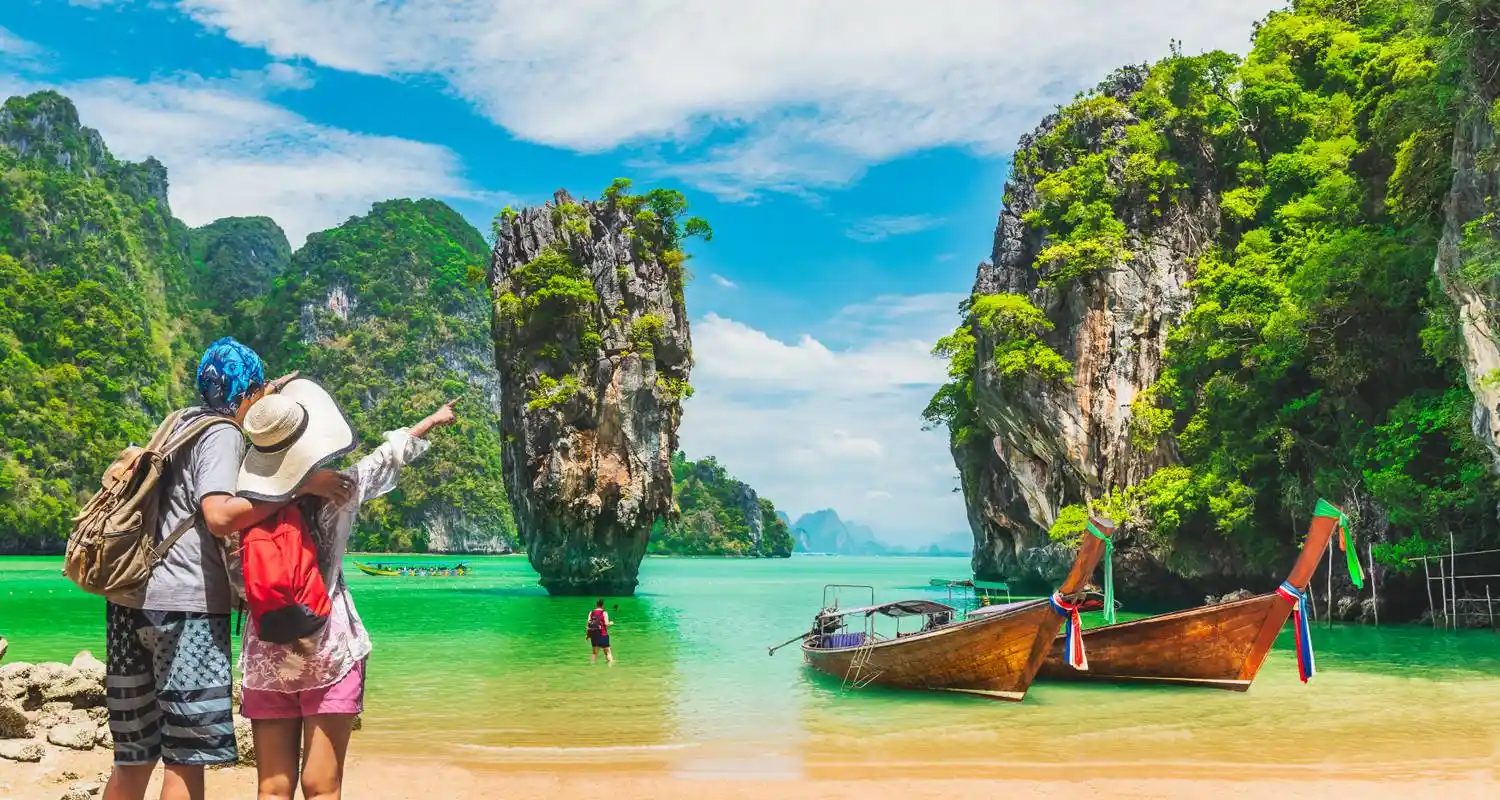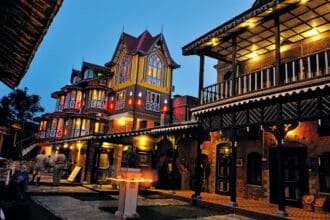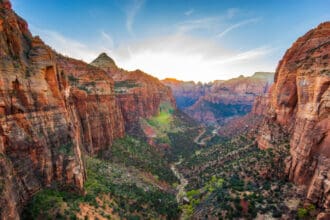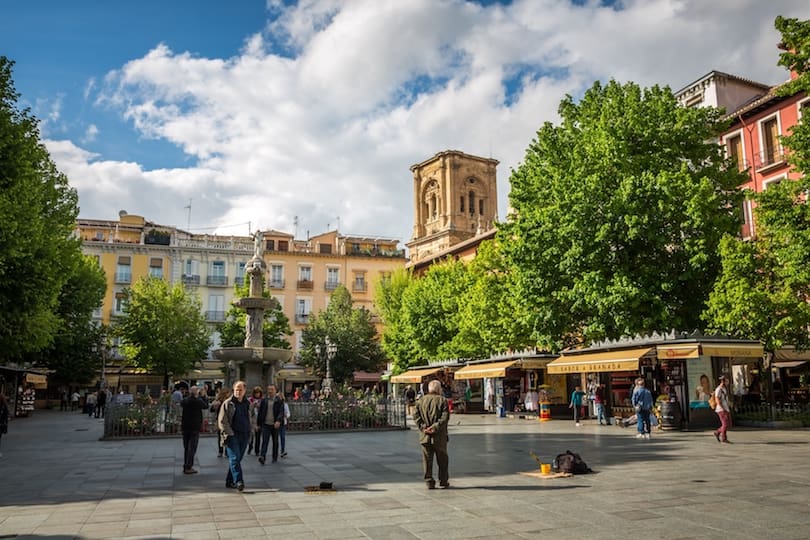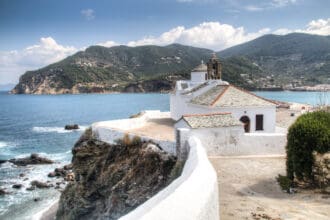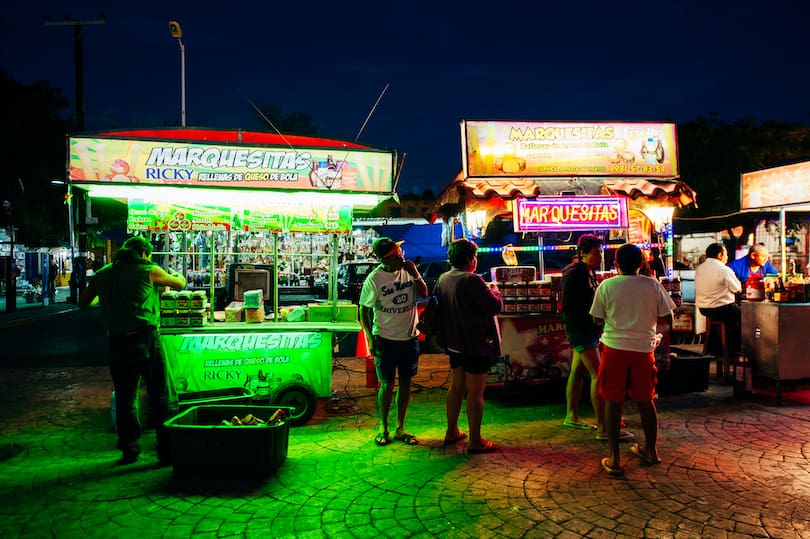Sanchi, a small town in the Raisen district of Madhya Pradesh, is a treasure trove of ancient history and spiritual significance. Renowned for its stunning stupas, intricate carvings, and serene monasteries, Sanchi offers a glimpse into India’s rich Buddhist heritage. Declared a UNESCO World Heritage Site, this tranquil destination attracts historians, pilgrims, and travelers alike. In this comprehensive guide, we will explore the top 5 places to visit in Sanchi , providing you with detailed insights, travel tips, and recommendations for nearby hotels and restaurants.
1. The Great Stupa (Stupa No. 1): The Crown Jewel of Sanchi
A Monument of Spiritual Significance
The Great Stupa , also known as Stupa No. 1 , is the most iconic landmark in Sanchi and one of the oldest stone structures in India. Commissioned by Emperor Ashoka in the 3rd century BCE, this stupa was built to house relics of the Buddha and serve as a symbol of peace and enlightenment. Standing at a height of 16.46 meters, the stupa is a hemispherical dome surrounded by a railing and four intricately carved gateways called toranas .
Architectural Marvels
Each of the four toranas is adorned with elaborate carvings depicting scenes from the life of the Buddha, Jataka tales (stories of his previous lives), and floral motifs. These carvings are not only artistic masterpieces but also provide valuable insights into the cultural and religious practices of ancient India. The stupa’s dome represents the universe, while the umbrella-like structure atop it symbolizes the Buddha’s enlightenment.
Visitors can walk around the stupa on a circumambulatory path, a practice that has been followed by pilgrims for centuries. The serene ambiance and the spiritual energy of the site make it a deeply meditative experience. The intricate details of the carvings tell stories of compassion, morality, and wisdom, making the stupa not just a visual delight but also an educational journey through Buddhist teachings.
Travel Tips
- Best Time to Visit : October to March, when the weather is pleasant.
- Entry Fee : Nominal charges apply for Indian and foreign tourists; discounts are available for students.
- Photography : Allowed in designated areas; avoid using flash to preserve the delicate carvings.
- Guided Tours : Highly recommended for a deeper understanding of the stupa’s history and symbolism. Local guides are knowledgeable and can provide fascinating anecdotes about the site.
- Facilities : Basic amenities like restrooms and drinking water are available near the entrance.
Nearby Hotels and Restaurants
- Hotel Tropicana : Offers comfortable accommodations with modern amenities and easy access to the Great Stupa. The hotel’s rooftop restaurant serves delicious North Indian cuisine while offering panoramic views of the surrounding landscape.
- Buddha Café : Known for its vegetarian thali meals and refreshing beverages. Their chai and samosas are particularly popular among visitors looking for a quick snack.
2. Stupa No. 2 and Stupa No. 3: Lesser-Known Gems
Exploring Hidden Treasures
While the Great Stupa often steals the spotlight, Stupa No. 2 and Stupa No. 3 are equally fascinating and deserve attention. These smaller stupas, located near the main complex, offer a quieter and more intimate experience for visitors.
Stupa No. 2: A Testament to Artistry
Stupa No. 2 is renowned for its exquisite carvings, which include depictions of animals, mythical creatures, and floral patterns. Although smaller in size compared to the Great Stupa, its artistic details are no less impressive. Archaeologists believe that this stupa predates the Great Stupa and provides valuable insights into the evolution of Buddhist architecture. The carvings here are simpler yet equally captivating, showcasing the early stages of Buddhist art.
Stupa No. 3: Relics of the Buddha
Stupa No. 3 is significant because it houses relics of two of the Buddha’s closest disciples, Sariputta and Mahamoggallana. This stupa is slightly larger than Stupa No. 2 and features similar architectural elements, including a circular base and a domed structure. Its historical importance makes it a must-visit for those interested in Buddhist philosophy and history. The relics were discovered during excavations in the 19th century and are now housed in the British Museum, but the stupa itself remains a sacred site for pilgrims.
Travel Tips
- How to Reach : Both stupas are within walking distance of the Great Stupa. Guided tours often include these sites as part of their itinerary.
- Timing : Open from sunrise to sunset. Early morning visits are ideal for avoiding crowds and capturing the best light for photography.
- Photography : Ideal for capturing close-up shots of the carvings and structural details. Use a macro lens to highlight the intricate designs.
- Facilities : Limited amenities; carry your own water and snacks if planning an extended stay.
Nearby Hotels and Restaurants
- Hotel Sanchi Retreat : Offers budget-friendly accommodations with clean and comfortable rooms. The hotel is conveniently located near the archaeological complex, making it easy to explore the stupas.
- Zen Garden Restaurant : Serves a variety of vegetarian dishes, including local specialties like dal baati churma. Their fresh juices and lassi are perfect for rehydrating after a day of exploration.
3. Sanchi Museum: A Treasure Trove of Antiquities
A Window into the Past
The Sanchi Museum , located near the Great Stupa, is a must-visit for anyone interested in archaeology and history. Established in 1919, the museum houses a remarkable collection of artifacts excavated from the Sanchi site and surrounding areas. These include sculptures, inscriptions, pottery, and decorative panels that shed light on the region’s Buddhist past.
Highlights of the Museum
One of the standout exhibits is a collection of limestone carvings depicting scenes from the Jataka tales. Another highlight is the display of Ashokan pillars, some of which feature the famous lion capital—a symbol of India’s national emblem. The museum also showcases tools and utensils used by ancient communities, offering a glimpse into their daily lives.
For children and families, the museum provides an educational experience through its interactive displays and informative plaques. It’s a great place to spend a couple of hours before or after visiting the stupas. The museum’s layout is well-organized, with each section dedicated to a specific theme or period, allowing visitors to follow a chronological journey through Sanchi’s history.
Travel Tips
- Entry Fee : Affordable rates; discounts available for students and senior citizens.
- Timing : Open from 10 AM to 5 PM daily; closed on Fridays.
- Photography : Photography is allowed in most sections, but flash is prohibited to preserve the artifacts.
- Guided Tours : While not mandatory, hiring a guide enhances the experience by providing context and background information about the exhibits.
Nearby Hotels and Restaurants
- Hotel Heritage Inn : Offers luxurious accommodations with panoramic views of the surrounding landscape. The hotel’s multi-cuisine restaurant serves a variety of international and local dishes.
- Monk’s Table : Known for its organic meals and traditional Indian snacks. Their lassi and kachoris are highly recommended for a quick and satisfying meal.
4. Gupta Temple: A Blend of Architectural Styles
A Glimpse into Hindu-Buddhist Fusion
The Gupta Temple , located within the Sanchi complex, is a rare example of early Hindu temple architecture. Built during the Gupta period (4th–6th century CE), this temple reflects the transition from Buddhist to Hindu religious practices in the region. Its simple yet elegant design includes a flat-roofed sanctum and a pillared mandapa (hall).
Unique Features
What sets the Gupta Temple apart is its fusion of Buddhist and Hindu architectural elements. While the overall structure resembles a Buddhist chaitya (prayer hall), the presence of Hindu deities and motifs highlights the coexistence of both religions during this period. The temple’s carvings depict scenes from Hindu epics like the Ramayana and Mahabharata, adding to its cultural significance.
Although smaller in scale compared to other monuments in Sanchi, the Gupta Temple is a testament to the region’s rich and diverse heritage. It’s a must-visit for architecture enthusiasts and history buffs. The temple’s simplicity and symmetry make it a perfect subject for photography, especially during golden hour when the soft light enhances its beauty.
Travel Tips
- How to Reach : Located within the Sanchi archaeological complex; accessible on foot.
- Timing : Open from sunrise to sunset. Evening visits are discouraged due to limited lighting.
- Photography : Ideal for capturing architectural details and carvings. Use a polarizing filter to reduce glare and enhance colors.
- Facilities : Limited amenities; carry your own water and snacks.
Nearby Hotels and Restaurants
- Hotel Royal Palace : Offers spacious rooms with modern amenities and a rooftop restaurant. The hotel’s location near the archaeological complex makes it convenient for exploring the site.
- Temple View Dhaba : Serves authentic North Indian cuisine, including paneer tikka and butter chicken. Their freshly baked rotis are a highlight.
5. Udayagiri Caves: A Journey Through Rock-Cut Architecture
A Hidden Gem Near Sanchi
Located approximately 13 kilometers from Sanchi, the Udayagiri Caves are a group of rock-cut caves dating back to the 4th–5th century CE. These caves were created during the reign of the Gupta dynasty and served as monastic retreats for Buddhist monks. Today, they stand as a testament to the region’s artistic and architectural achievements.
Exploring the Caves
The Udayagiri Caves consist of over 20 individual caves, each with its own unique features. Some caves contain inscriptions and carvings dedicated to Hindu deities, while others feature intricate reliefs depicting scenes from Buddhist teachings. One of the most notable caves is Cave 1, which houses a massive statue of Vishnu reclining on the serpent Shesha. The statue is carved directly into the rock face and is considered one of the finest examples of Gupta-era sculpture.
The caves are surrounded by lush greenery and rolling hills, making them a perfect spot for nature lovers and photographers. Visitors can enjoy leisurely walks along the pathways connecting the caves, soaking in the peaceful ambiance. During monsoon season, the surrounding landscape transforms into a verdant paradise, with waterfalls and streams adding to the charm.
Travel Tips
- How to Reach : Accessible by road from Sanchi; private taxis and buses are available. The journey takes about 30 minutes, depending on road conditions.
- Timing : Open from sunrise to sunset. Early morning visits are ideal for cooler temperatures and better lighting for photography.
- Photography : Bring a wide-angle lens to capture the interiors of the caves and surrounding landscapes. Use a tripod for stability in low-light conditions.
- Facilities : Basic amenities like restrooms and drinking water are available near the entrance.
Nearby Hotels and Restaurants
- Hotel Hilltop Retreat : Offers cozy accommodations with stunning views of the countryside. The hotel’s garden café serves fresh juices and light snacks.
- Cave Café : Known for its fresh juices and light snacks. Try their mango shake for a refreshing treat after exploring the caves.
Travel Tips for Exploring Sanchi
- Transportation : Hire a private cab or use auto-rickshaws for convenience. Public buses are also available but may not cover all tourist spots. For longer distances, consider renting a scooter or bike for added flexibility.
- Language : Hindi is widely spoken; English is understood in tourist areas. Learning a few basic phrases in Hindi can help you connect better with locals.
- Currency : Carry cash as ATMs may not be readily available in remote locations. Most establishments accept cash payments only.
- Safety : Always keep your belongings secure and follow local advice. Avoid venturing into isolated areas alone, especially after dark.
- Weather Considerations : Summers in Sanchi can be hot, with temperatures soaring above 40°C. Plan accordingly and carry plenty of water and sunscreen. Winters are mild and pleasant, making it the ideal time for outdoor activities.
- Cultural Etiquette : Respect local customs and traditions. Dress modestly, especially when visiting religious sites, and seek permission before photographing people.
Conclusion
Sanchi is a destination that seamlessly blends spirituality, history, and natural beauty. Whether you’re exploring the majestic Great Stupa, marveling at the intricate carvings of Stupa No. 2 and No. 3, or seeking tranquility at the Udayagiri Caves, each location offers a unique experience. By planning your trip with our detailed guide, you can ensure a memorable journey through Sanchi’s hidden treasures.
Frequently Asked Questions (FAQs)
- What is the best time to visit Sanchi?
- The ideal time is between October and March, when the weather is mild and pleasant.
- How do I reach Sanchi?
- Sanchi is well-connected by road and rail. The nearest airport is Bhopal Airport, located about 46 kilometers away. Regular trains and buses connect Sanchi to major cities in India.
- Are these places suitable for families?
- Yes, all five locations cater to family-friendly activities. Children will enjoy exploring the caves and museum.
- Is photography allowed at these sites?
- Generally yes, but restrictions may apply at certain areas. Always ask for permission before clicking pictures of people or religious ceremonies.
- Do I need a guide to explore these places?
- While not mandatory, hiring a guide enhances the experience by providing valuable insights into the history and significance of each site.
- What should I wear while visiting temples?
- Opt for modest clothing covering shoulders and knees. Remove footwear before entering temple premises.
- Are there any entry fees for these attractions?
- Most places have nominal entry fees; discounts are available for students and senior citizens.
- Can I find vegetarian food easily in Sanchi?
- Absolutely! Vegetarian options dominate the local cuisine. Most restaurants and eateries specialize in North Indian vegetarian dishes.
- Are these destinations safe for solo travelers?
- Yes, Sanchi is generally safe, but basic precautions are advised. Stick to well-lit areas and avoid traveling alone at night.
- What souvenirs can I buy in Sanchi?
- Handicrafts, replicas of stupas, and traditional jewelry make excellent keepsakes. Look for locally made stone carvings and pottery.

